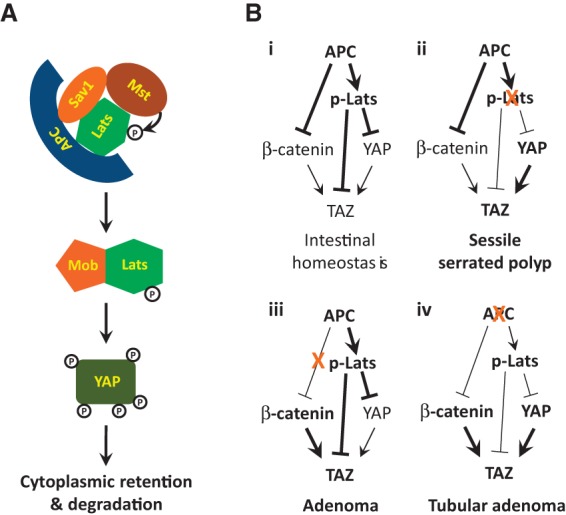Figure 7.

A schematic model showing APC-dependent regulation of Hippo–YAP signaling (A) and the contribution of YAP, β-catenin, and TAZ to intestinal tumorigenesis in various genetic backgrounds (B). (A) APC physically interacts with Sav1 and Lats and facilitates phosphorylation of Lats1/2 by Mst1/2. Activated Lats1/2 in complex with Mob1 phosphorylates YAP, resulting in its cytoplasmic retention and β-Trcp-mediated degradation. (B) Dual regulation of Hippo and Wnt signaling by APC. The transcriptional regulation of TAZ by YAP and β-catenin is also illustrated. (Panel i) Under physiological conditions, APC suppresses both YAP/TAZ and β-catenin to achieve intestinal homeostasis. (Panel ii) When Hippo signaling is perturbed (e.g., loss of Sav1), activation of YAP leads to development of SSPs in the colon, while APC retains its function to inactivate β-catenin. When β-catenin is stabilized through mutations that abolish its phosphorylation by GSK-3β and CK1, APC can still suppress YAP/TAZ activity through Hippo signaling. (Panel iii) Activation of β-catenin alone leads to adenoma development in the intestine. (Panel iv) Upon inactivation of APC, both YAP/TAZ and β-catenin are activated, resulting in the development of tubular adenomas.
